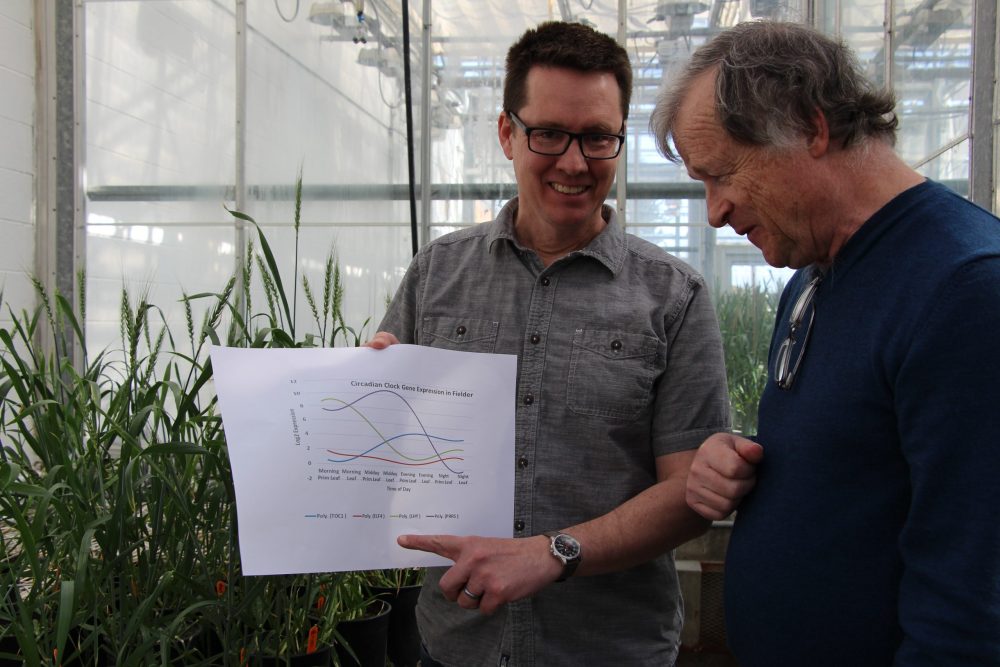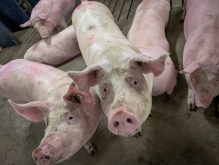It’s only early spring, but things are already heating up in southern Alberta.
Research scientist John Laurie has just planted the federal government’s first plots of gene-edited wheat at the Lethbridge Research and Development Centre.
These lines are grown in a greenhouse after being successfully propagated in growth chambers. Laurie is excited for where his work could ultimately lead.
Read Also

Best before doesn’t mean bad after
Best before dates are not expiry dates, and the confusion often leads to plenty of food waste.
“The best thing that could come out of this would be increased drought tolerance,” he says. “That’s the biggest thing the plants might have to deal with moving forward into the future.”
The edited genes are linked to the plants’ circadian clock. Research scientists in other parts of the world have discovered and isolated a gene called Ppd-1, which regulates how long a plant perceives day length, which translates into date of heading and spike characteristics.
A good example is in tomato, where domestication of a circadian clock gene allowed cultivation in northern latitudes, not just near the equator where it was traditionally grown.
Laurie and project co-lead André Laroche are working with about a half-dozen circadian clock genes similar to Ppd-1 in this spring wheat research. He says if AAFC can create varieties with the Ppd-1-like edits, wheat varieties could function better.
“If these other clock genes are able to even partially do what Ppd-1 has done, then they could have a huge impact on wheat globally,” he says. “In tweaking the clock, we can probably push wheat to maximize its performance.”
Typically, wheat plants have the most photosynthetic ability in the morning and midday. With the edits, Laurie’s research could create wheat with greater ability to receive and use sunlight.
New frontier
During the Green Revolution of the 1960s, innovations were found using mutagenesis, in which plants could be exposed to radiation or various chemicals to create genetic variation. Breeders would then plant those mutated lines and try to discover beneficial mutations.
It was a painstaking process that took years, if not decades, to find improved genetics. Results will presumably flow faster for scientists of all stripes as gene editing gains popularity.
“With gene editing, we precisely target the exact sequence we want,” says Laurie.
His wheat edits were done through dual processes known as Crispr/Cas9 and HI-edit. This shaved years off conventional breeding because uniform genetics are produced the first time, eliminating the need to take a good plant and back-breed it with other crosses to produce new lines.
During the phenotyping stage — observing crop characteristics during selection — Laurie noticed differences in flowering time, plant height and stalk thickness; subtle, yet important, differences.
“It’s not like we’re creating a completely different type of wheat. It’s just we’re tweaking the control that clock has on the plant.”
Spring wheat is a hexaploid, meaning it carries six total genes — two A, B and D genes. Laurie is mixing and matching the edited genes in an attempt to produce elite lines.
“It’s like a thermostat on your house controlling the temperature. You can turn it down a little bit, turn it up a little bit. That’s what we were trying to do with the gene editing.
“It’s not to fully knock out these particular genes, but we actually have the power to regulate those genes.”
Edited lines are being planted alongside the control variety, AC Andrew, a soft white spring wheat.
Welcome development
Laurie’s research is music to the ears of Krista Zuzak, director of crop protection and production at Cereals Canada. Gene editing technology and the edited crops themselves carry significant upside, she believes.
“It can provide many benefits; at the farmer level in terms of production, pest management or better input use efficiency,” she says. “We also see overall benefits for the Canadian economy when we’re protected from pests, especially mycotoxins, which can cause human health issues.”
Zuzak says the technology can help in virtually all areas of production. There is recent gene editing research on powdery mildew resistance and even nitrogen use efficiency in wheat.
“All of it could save farmers money on input costs. That’s one of the exciting parts about gene editing, is that it does have such practical implications and benefits for Canadian farmers as well as the full value chain.”
Funding for this research was provided by RDAR, Alberta Grains, SaskWheat and the International Wheat Yield Partnership.















